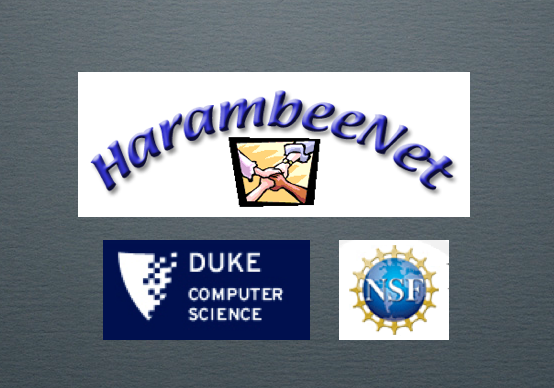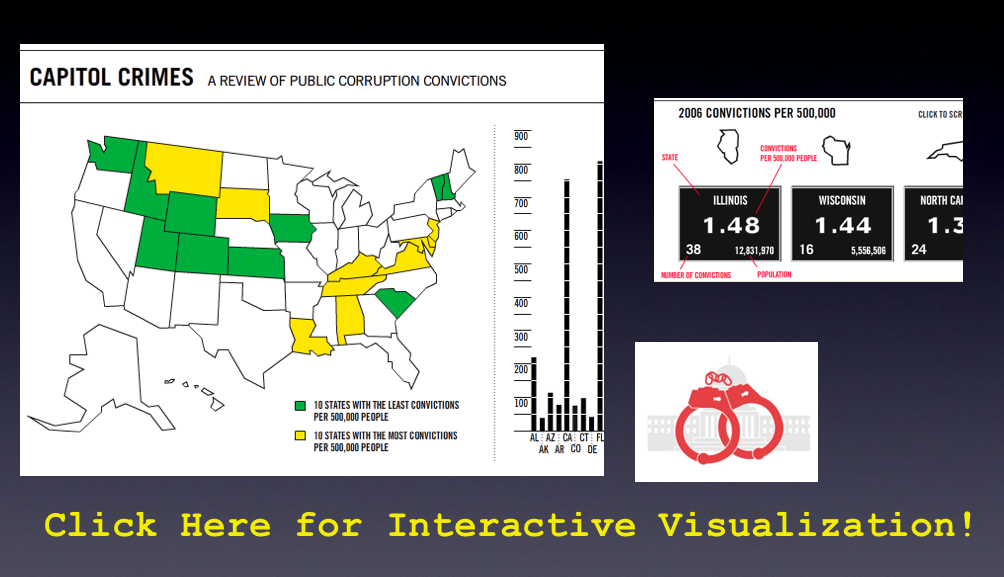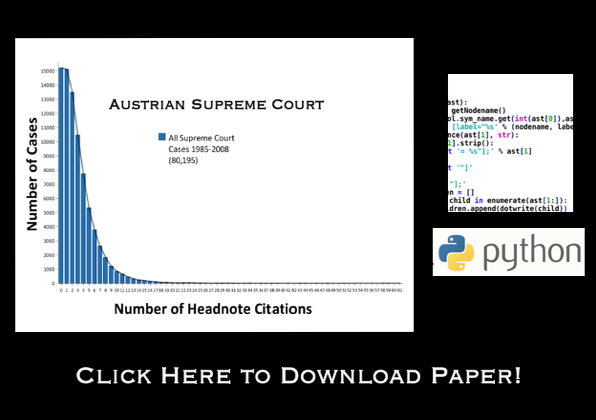In the Meantime … Movie of Flight Patterns
So it has and will be light blogging while we finish a number of projects here in Ann Arbor. There are a number interesting papers in the queue including The Development of Community Structure in the Supreme Court’s Network of Citations (with James Fowler, James Spriggs and Jon Zelner) and A Tale of Two Codes: An Empirical Analysis of The Jurisprudence of the United States Tax Court (1990-2008) (with Lilian V. Faulhaber). Both are forthcoming to the SSRN and the CLS BLOG in the coming days. So in the mean time please enjoy the above movie …. and we will do our best to provide content during this busy period….
HarambeeNet @ Duke Computer Science

We enjoyed today’s discussion at the Harambeenet Conference here in the Duke Computer Science Department. The conference is centered upon network science and computer science education. It features lots of interdisciplinary scholarship and applications of computer science techniques in novel domains.
We are looking forward to an interesting final day of discussion and hope to participate in allied future conferences.
Power Laws, Preferential Attachment and Positive Legal Theory [Part 1]
The visual above is drawn from the Netlogo Simulation of preferential attachment. “In the model, a given node prefers to connect to other nodes that already display high indegree. As the number of connections a given agent displays is a function of the number the agent possessed in earlier time periods, the distribution of connections is highly susceptible to the initial starting conditions. For instance, consider a network that has four nodes A, B, C and D where A is connected to B and C is connected to D. If node E enters the network, assume the initial probability of attachment to the AB community is equal to that of the CD community. Once E connects to either the AB or CD community, subsequent entrants such as node F, G and beyond are more likely to connect with the community selected by E.” The model offers one of the generative processes responsible for creating a network with a power law distribution.
There are important differences between the abstract model as initially described in Albert-László Barabási & Reka Albert, Emergence of Scaling in Random Networks, 286 Science 509 (1999) and the dynamics of broader social world. While a number of extensions of the model have been authored in the period following the original article, what is striking is how much leverage on basic dynamics can be gleaned from the graph analog of a Yule process.
For purposes of positive legal theory consider the following passage … “In order to contextualize what a particular observed network structure implies, it is critical to remember that the social landscape need not take any particular form. Scaffolding could indeed assume a variety of flavors and there are causal mechanisms that act at the micro-level to produce the observed macro-architecture.” While such distributions have been documented in a variety of context relevant for positive legal theory, it is important to note this distribution of social authority is by no means a given. Specifically, as we described in Social Architecture, Judicial Peer Effects and the ‘Evolution’ of the Law: Toward a Positive Theory of Judicial Social Structure social systems can embrace a wide variety of architectures. Thus, we believe the documented tendency of common law and its constitutive systems to generate such highly skewed distributions is highly relevant.
In Part II of this post, we will highlight the current state of the relevant applied legal literature. This includes not only our work but also important studies by a wide number of other legal scholars. To preview, check out this post from a few days ago…
State Level Obesity Trends from the CDC Website
It has been light blogging while we finish some projects here in Ann Arbor. In the meantime, here is an interesting visual offered by CDC website. Also, check out an important paper in this vein by Nicholas Christakis & James Fowler entitled The Spread of Obesity in a Large Social Network Over 32 Years (Click to the Left to Link to the Original Movie). Anyway, more to come later in the week…
YouTube Research — Robust Dynamic Classes Revealed by Measuring the Response Function of a Social System
Here at the CSCS Lab, we are working hard to finish up some projects. In the meantime, we wanted to highlight one of our favorite articles, an article we previously highlighted on the blog. Some of you might ask “what does this have to do with law or social science?” (1) We believe the taxonomy outlined in this article could potentially be applied to a wide set of social phenomena (2) As we say around here, if you are not reading outside your discipline, you are far less likely to be able to innovate within your discipline. So we suggest you consider downloading this paper….
Computational Social Science in Science Magazine [Repost from 3/22]
This article in a recent issue of Science Magazine — authored by some of the leaders in field including Gary King, James Fowler, David Lazer, Albert-László Barabási, Lada Adamic as well as several others — highlights some of the possibilities of and perils associated with a computational revolution in the social sciences. We believe it is a worthwhile read….
Citation Analysis in Continental Jurisdictions
Anton Geist has posted Using Citation Analysis Techniques for Computer-Assisted Legal Research in Continental Jurisdictions to the SSRN. While this is certainly longer than most papers, we believe it offers a good review of the broader information retrieval and law literature. In addition, it offers some empirical insight into citation patterns within continental jurisdictions. The findings in this paper are similar to those shown in important papers by Thomas Smith in The Web of the Law and by David Post & Michael Eisen in How Long is the Coastline of Law? Thoughts on the Fractal Nature of Legal Systems.
In our view, the next step for this research is to determine whether the pattern does indeed follow a power law distribution. Specifically, there exists a Maximum Likelihood based test developed in the applied physics paper Power-law Distributions in Empirical Data by Aaron Clauset, Cosma Shalizi and Mark Newman which can help adjudicate whether the detected pattern represents a highly skewed distribution or is indeed a power law.
Either way, we are excited by this paper as we believe comparative research is absolutely critical to broader theory development.














